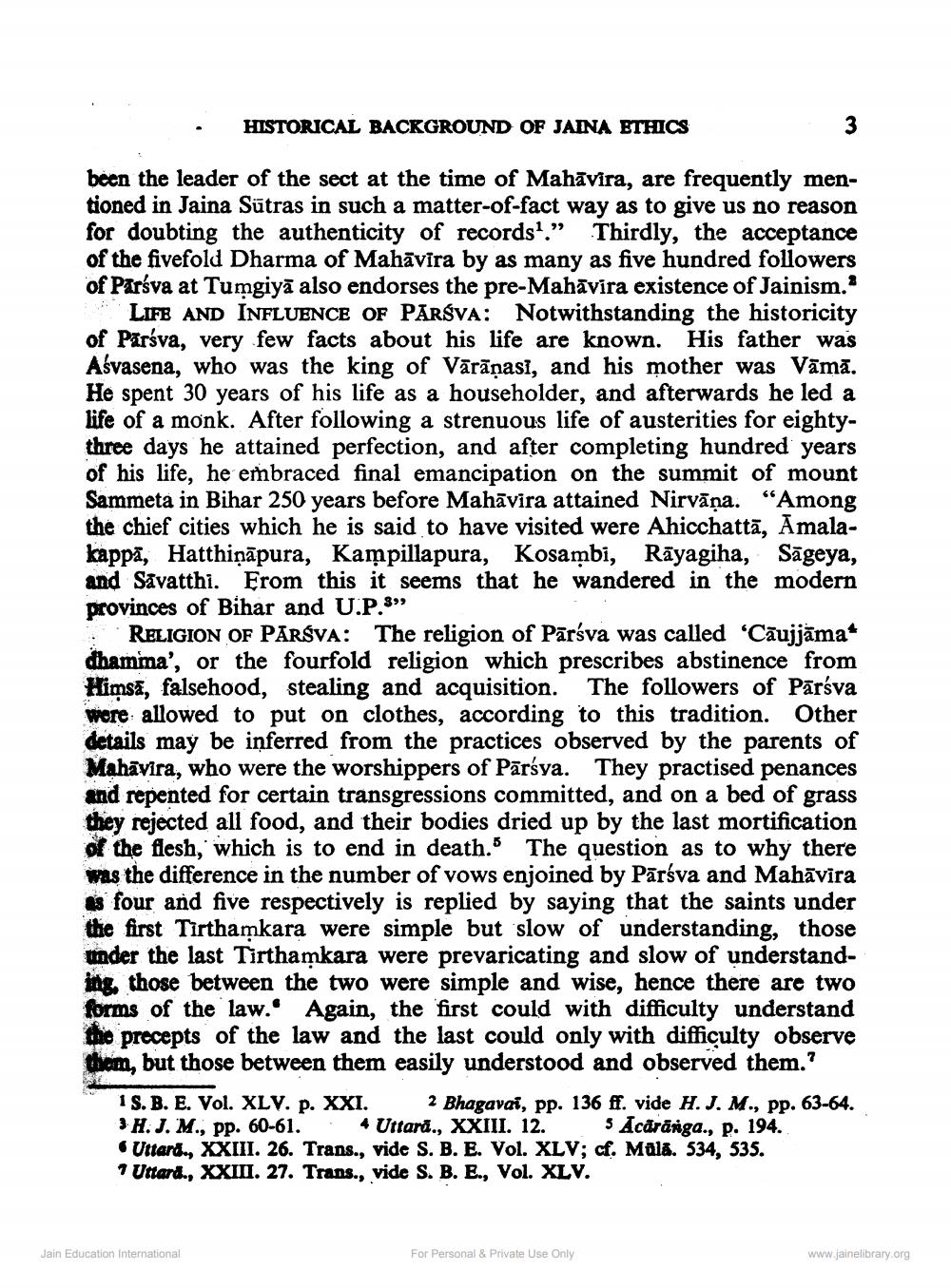________________
•
HISTORICAL BACKGROUND OF JAINA ETHICS
been the leader of the sect at the time of Mahāvira, are frequently mentioned in Jaina Sütras in such a matter-of-fact way as to give us no reason for doubting the authenticity of records.” Thirdly, the acceptance of the fivefold Dharma of Mahāvīra by as many as five hundred followers of Parsva at Tumgiyā also endorses the pre-Mahāvira existence of Jainism.
*LIFE AND INFLUENCE OF PĀRÁVA: Notwithstanding the historicity of Pārsva, very few facts about his life are known. His father was Aśvasena, who was the king of Vārānasi, and his mother was Vāmā. He spent 30 years of his life as a householder, and afterwards he led a life of a monk. After following a strenuous life of austerities for eightythree days he attained perfection, and after completing hundred years of his life, he embraced final emancipation on the summit of mount Sammeta in Bihar 250 years before Mahāvira attained Nirvāņa. "Among the chief cities which he is said to have visited were Ahicchattā, Āmalakappi, Hatthiņāpura, Kampillapura, Kosambi, Rāyagiha, Sāgeya, and Savatthi. Erom this it seems that he wandered in the modern provinces of Bihar and U.P.3"
RELIGION OF PĀRÁVA: The religion of Pārsva was called 'Cãujjāma* dhamina', or the fourfold religion which prescribes abstinence from Himsa, falsehood, stealing and acquisition. The followers of Pārsva were allowed to put on clothes, according to this tradition. Other details may be inferred from the practices observed by the parents of Mahavira, who were the worshippers of Pārsya. They practised penances and repented for certain transgressions committed, and on a bed of grass they rejected all food, and their bodies dried up by the last mortification of the flesh, which is to end in death. The question as to why there was the difference in the number of vows enjoined by Pārśva and Mahāvira u four and five respectively is replied by saying that the saints under the first Tirthamkara were simple but slow of understanding, those under the last Tirthamkara were prevaricating and slow of understanding, those between the two were simple and wise, hence there are two forms of the law. Again, the first could with difficulty understand the precepts of the law and the last could only with difficulty observe them, but those between them easily understood and observed them.
1S.B. E. Vol. XLV. p. XXI. 2 Bhagavai, pp. 136 ff. vide H. J. M., pp. 63-64. 3 H. J. M., pp. 60-61. : Uttară., XXIII. 12. Acaränga., p. 194.
Uttard., XXIII. 26. Trans., vide S. B. E. Vol. XLV; cf. Mæla. 534, 535. 7 Uttard., XXIII. 27. Trans., vide S. B. E., Vol. XLV.
Jain Education International
For Personal & Private Use Only
www.jainelibrary.org




